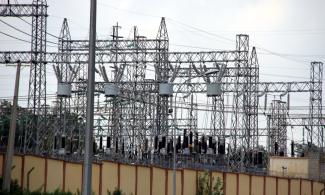
According to her, power plants built under the NIPP scheme, sell at
N19, while the high-end thermal power stations sell at N24.

The Association of Power Generation Companies says the most
expensively-produced electricity in the country is valued at N24.
The Executive Secretary of APGC, Joy Agaji, told Sahara Reporters that
the cheapest power sold was sourced from a hydro generation at N11 per
kilowatt-hour.
According to her, power plants built under the NIPP scheme, sell at
N19, while the high-end thermal power stations sell at N24.
Citing sources within the Nigerian Electricity Regulatory Commission
and the Transmission Company of Nigeria, Kunle Olubiyo, convener of
the Nigeria Consumer Protection Network, corroborated Agaji’s figures,
saying, “The GenCos average tariff on a monthly basis that is
transferred to the Discos as if now, is between N23/kwh to N25/kwh,
depending on the combination of hydro and thermal generation that is
dispatched in a month."
The Association of Nigerian Electricity Distributors, have maintained
for years that the industry was not operating a cost-reflective
tariff. According to the last mile electricity supplier, it purchased
power from the bulk trader – the Nigerian Bulk Electricity Trading
company at about N80.88 per kilowatt-hour and sold to consumers at an
average of N31.50 – creating a shortfall of N49.38.
The 11 distribution companies have on this premise insisted that they
cannot make full remittances to TCN and the GenCos, as they were not
collecting all of the electricity supplied, which they still go on to
sell at less than half the value.
Olubiyo further told SaharaReporters that any tariff issues the Discos
legitimately had in the past, were taken care of with the minimum
remittance order for 2016 to 2019, issued to the distribution
companies in August.
According to him, that review adjusted the inflation rate on which the
Discos were operating from N197 to N305 and brought other cost
implication factors in line with current realities.
“The average tariff of the Discos was about N32/kwh but with the
retroactive minor reviews that NERC did recently, it came to about
N55/kwh. This means that over the years (2016 to 2019) the Discos were
not allowed to charge a reflective tariff to the end-users and at the
same time, were being billed by NBET with actual GenCos tariff. This
resulted in Discos' low remittance and constant complaining of a
non-cost reflective tariff,” Olubiyo explained.
He added, “Example was while the FX for the Discos tariff was using
N197:$1, the FX on the GenCos bill was using N305:$1. This was a bad
situation for the Discos. What NERC has now done was to adjust the
macroeconomic indices to get the actual cost-reflective tariff for the
Discos, which according to NERC, came to about N55/kwh.”
With the government unwilling to pass the bulk of the cost on to
Nigerians, it decided to create a N600-billion subsidy that would
allow the discos to keep charging N32 until June 2020, he added.
NERC officials appeared to be confused at the computation of the
Discos’ N80.88 submission since the commission had already taken that
into effect.
“The average cost of electricity based on our last minor review is
under 55 naira. I, therefore, don't know how the Discos computed N80.
TCN tariff and other admin charges (NERC, MO — Market Operator, and
NBET) are only N7.8 but been frozen to N3.4 based on the order
requiring Discos to settle 100% at N3.7.
"In effect, the Discos are requested to pay only 50% of the true TCN
and admin tariff. You need to ask them how much their own cost as from
the figure they gave is,” a source told SaharaReporters.
In a statement on Wednesday, the Discos appealed to the National
Assembly to stop the commission from revoking their licenses over the
inability to meet up with the 35 percent minimum remittance threshold
set by the commission.
The Discos had argued in the release that they were owed over N100
billion by various ministries, departments, and agencies of
government.
They had also claimed that the data on the accepted technical and
commercial losses priced into the new tariff structure was flawed
because it did not capture the exact T&C losses in the industry